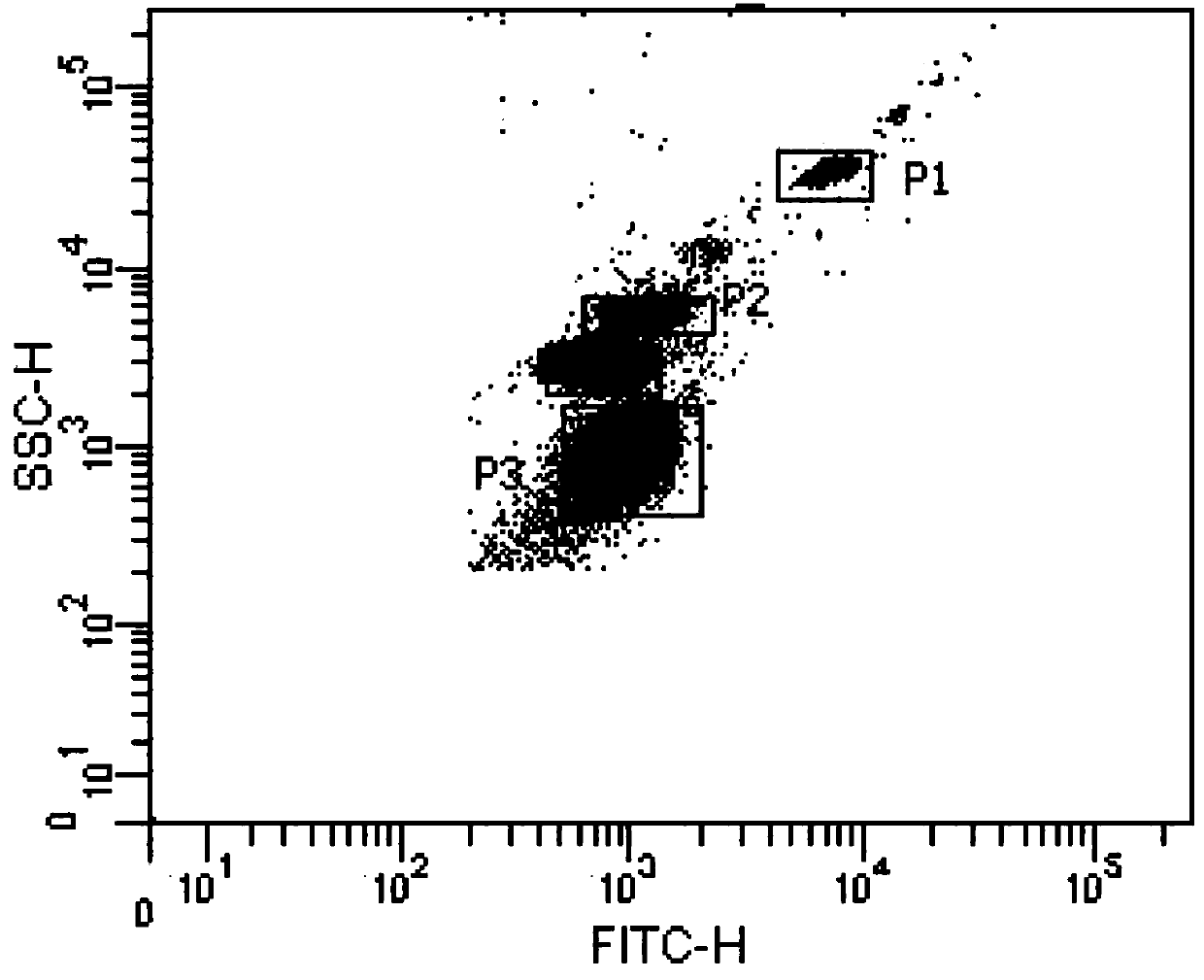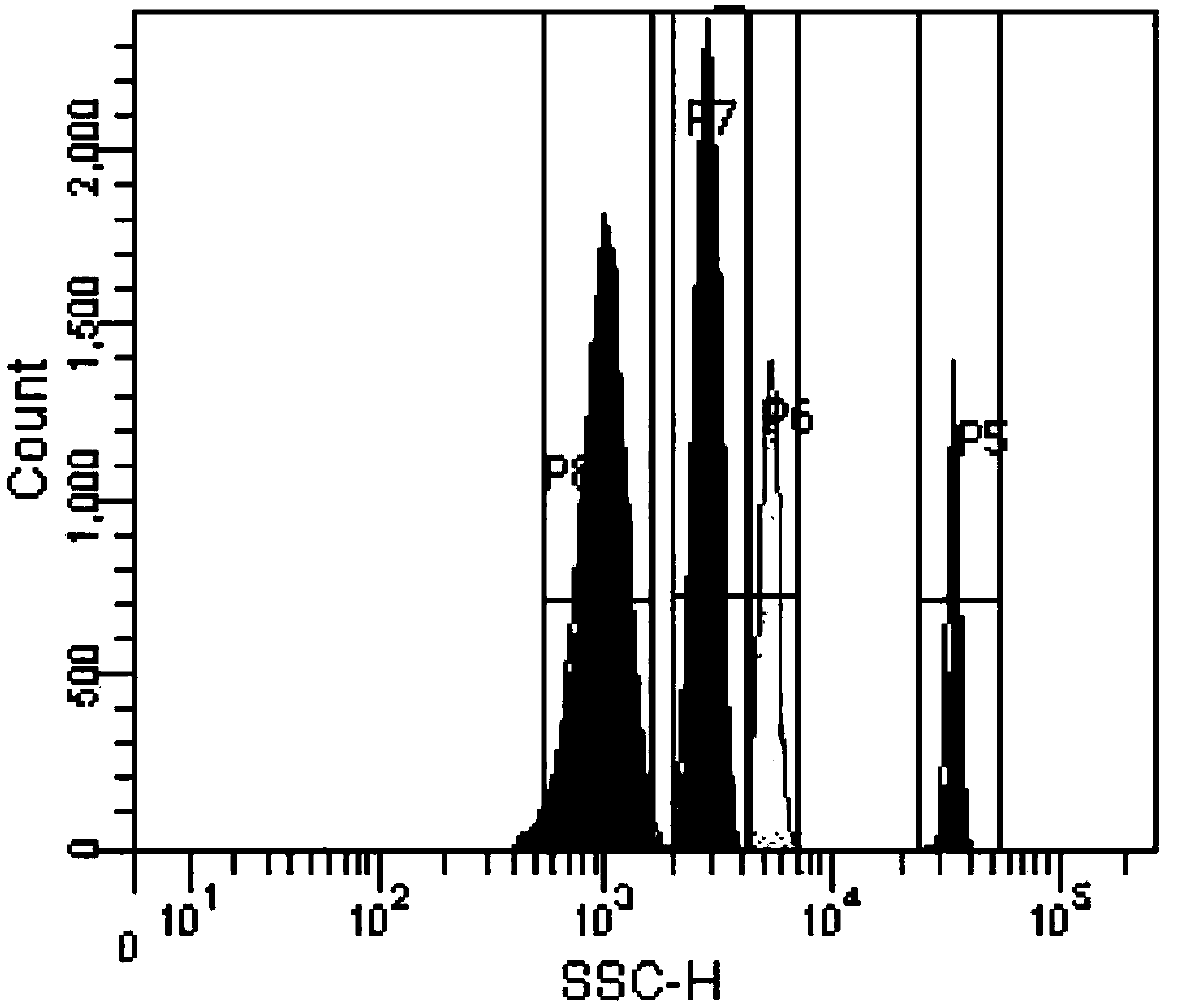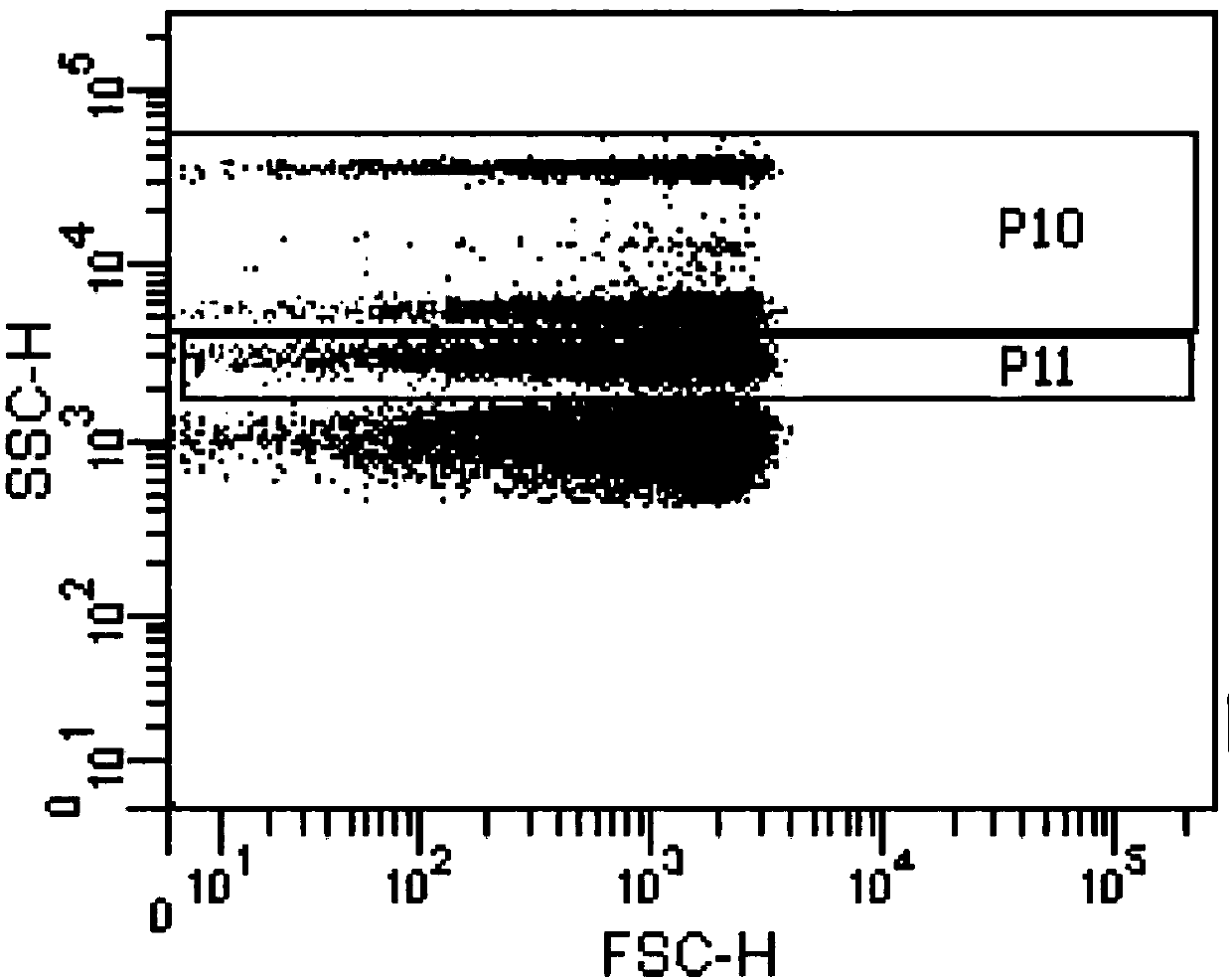Method for detecting pulmonary embolism
A technology for pulmonary embolism and sample detection, applied in the field of biomedicine, can solve the problems of elevated D-dimer and low specificity, and achieve the effect of simple operation, mature technology and wide industrial value
- Summary
- Abstract
- Description
- Claims
- Application Information
AI Technical Summary
Problems solved by technology
Method used
Image
Examples
Embodiment
[0050] The test materials are as follows:
[0051] Standard microspheres (Megamix plus SSC beads): French BioCytex company.
[0052] Flow antibody: American BD company.
[0053] Absolute counting tube: American BD company.
[0054] Flow cytometer: BD Company, USA.
[0055] Elisa kit: American R&D Company.
[0056] Dichotomous stepwise logistic regression analysis: MedCalc software, Maria Kerke, Belgium, version 11.4.2.0.
[0057] 1. PMPs flow cytometry antibody labeling
[0058] The method of PMPs flow cytometry antibody labeling is as follows: Standard flow method is used for labeling.
[0059] The specific steps are: collect 2 mL of peripheral venous blood from the research subjects, centrifuge the blood for 15 minutes under a centrifugal force of 2500 g, separate the plasma, and centrifuge the separated plasma again for 15 minutes to obtain platelet-poor plasma (PFP) samples.
[0060] Dilute 10X annexin V binding buffer to 1X working solution, such as: 1mL Buffer+9mL ...
PUM
 Login to View More
Login to View More Abstract
Description
Claims
Application Information
 Login to View More
Login to View More - R&D
- Intellectual Property
- Life Sciences
- Materials
- Tech Scout
- Unparalleled Data Quality
- Higher Quality Content
- 60% Fewer Hallucinations
Browse by: Latest US Patents, China's latest patents, Technical Efficacy Thesaurus, Application Domain, Technology Topic, Popular Technical Reports.
© 2025 PatSnap. All rights reserved.Legal|Privacy policy|Modern Slavery Act Transparency Statement|Sitemap|About US| Contact US: help@patsnap.com



